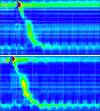Electrical stimulation therapy for gastroesophageal reflux disease
- PMID: 24847842
- PMCID: PMC4102155
- DOI: 10.5056/jnm13137
Electrical stimulation therapy for gastroesophageal reflux disease
Abstract
Electrical stimulation therapy (EST) of the lower esophageal sphincter is a relatively new technique for the treatment of gastroesophageal reflux disease (GERD) that may address the need of GERD patients, unsatisfied with acid suppressive medication and concerned with the potential risks of surgical fundoplication. In this paper we review available data about EST for GERD, including the development of the technique, implant procedure, safety and results from open-label trials. Two short-term temporary stimulation and long-term open-label human trials each were initiated to investigate the safety and efficacy of EST for the treatment of GERD and currently up to 2 years follow-up results are available. The results of EST are promising as the open-label studies have shown that EST is a safe technique with a significant improvement in both subjective outcomes of symptoms and objective outcomes of esophageal acid exposure in patients with GERD. However, long-term data from larger number of patients and a sham-controlled trial are required before EST can be conclusively advised as a viable treatment option for GERD patients.
Keywords: Electrical stimulation therapy, Esophageal sphincter, lower, Gastroesophageal reflux disease.
Figures




References
-
- Lim SL, Goh WT, Lee JM, Ng TP, Ho KY, Community Medicine GI Study Group Changing prevalence of gastroesophageal reflux with changing time: longitudinal study in an Asian population. J Gastroenterol Hepatol. 2005;20:995–1001. - PubMed
-
- Ho KY, Chan YH, Kang JY. Increasing trend of reflux esophagitis and decreasing trend of Helicobacter pylori infection in patients from a multiethnic Asian country. Am J Gastroenterol. 2005;100:1923–1928. - PubMed
-
- Khan M, Santana J, Donnellan C, Preston C, Moayyedi P. Medical treatments in the short term management of reflux oesophagitis. Cochrane Database Syst Rev . 2007;2:CD003244. - PubMed
LinkOut - more resources
Full Text Sources
Other Literature Sources
Research Materials

